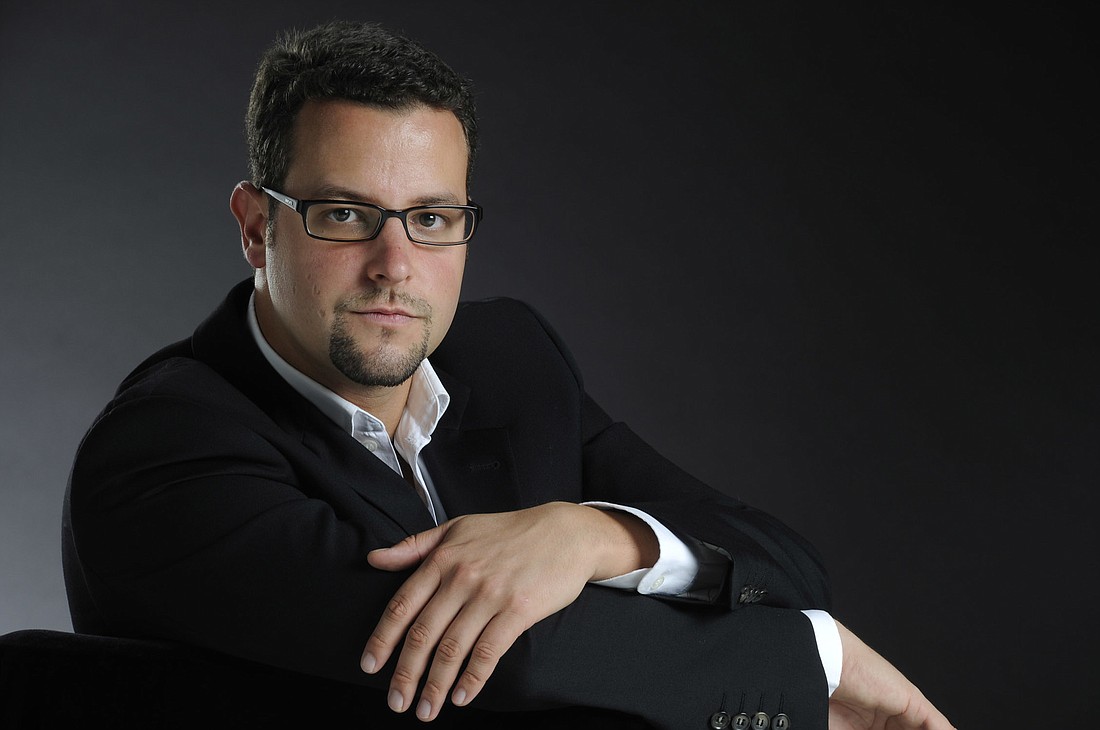- November 25, 2024
-
-
Loading

Loading

Every once in a while, there’s a concert that’s so satisfying, we leave smiling. That happened a couple of weeks ago when chamber ensembles from the Sarasota Orchestra presented a concert in Holley Hall devoted to Mozart. They called it “Mozart Madness” because two of the three works were composed by Mozart and the third was in written in his memory by the 20th century Brazilian composer, Heitor Villa-Lobos.
What made the concert so satisfying was the playing. The Sarasota String Quartet opened the program with Mozart’s String Quartet No. 16 in E flat. Eventually dedicated by Mozart to Haydn, this is one of a set of six quartets written in Vienna. It takes the kinds of unexpected twists and turns heard more often in works by Haydn than Mozart, but it also takes us to places only Mozart could dream up. The second movement, for example, has some really unusual dissonances harmonizing a simple melody. Listening to it, I could only think, "Only Mozart would have done that."
It’s a unique piece, and a somewhat atypical Sarasota String Quartet, in that all the usual members weren’t in attendance, played it. Violinists Daniel Jordan and Christopher Takeda and violist Elizabeth Beilman — all members of the ensemble — were playing. But Isabelle Besancon was sitting in for cellist Abraham Feder. The exciting part is that these musicians are so accustomed to working together in the Sarasota Orchestra, there was little problem with them playing chamber music collectively on this occasion.
Mozart’s Piano Quintet, also in E flat, was the second offering and, in the hands of pianist Jonathan Spivey, oboist Adam De Sorgo, clarinetist Bharat Chandra, bassoonist Fernando Traba and hornist Joe Assi, it was pure charm. Each instrument blended as if the four wind players had grown up on the same block. And, with Spivey’s underpinning, the work took on an almost operatic glow. In fact, Mozart must have been looking ahead to “Don Giovanni” because a lot of the instrumental voicing had overtones of vocal music he’d write a few years later.
We often talk about the shaping of phrases and how important musical sculpting is to a performance. Spivey wove Mozart’s ingenious syncopations and one-of-a-kind harmonies into a beautifully rounded foundation for his Sarasota Orchestra colleagues, never overpowering them but always supporting and fortifying them as they sang their way through this instrumentally operatic ensemble. (We will miss Assi after this season, by the way, because he's leaving Sarasota to play French horn in the Dallas Symphony.)
Villa-Lobos’ Sinfonietta No. 1, subtitled, “In Memory of Mozart,” is one strange, quirky piece of music. Dirk Meyer led the chamber ensemble, made of musicians from the Sarasota Orchestra, in a somewhat serious reading of this anomalous work. They started with a chorale-like dirge that brightened into rather jaunty music that had as much to do with Mozart as my great-grandfather. Yes, there was an undercurrent of sections from the Overture to the “Magic Flute,” but that was about the closest thing resembling Mozart’s memory I could find.
The Sinfonietta’s orchestration is also odd. Villa-Lobos takes the ensemble apart, giving an element to all the brass, for example, and then adding strings and, finally, winds. It’s an eccentric way of coloring an orchestra and, beyond being interested in hearing something I’d not heard before, the 19 minutes it took to be played weren’t entirely worth the trouble.
Still, its very incongruities made for unconventional ideas and, with apologies to Mozart, it was fun. Best of all, the musicians put forth some fine playing, and that’s what made this Mozart Madness emotionally and aurally satisfying.